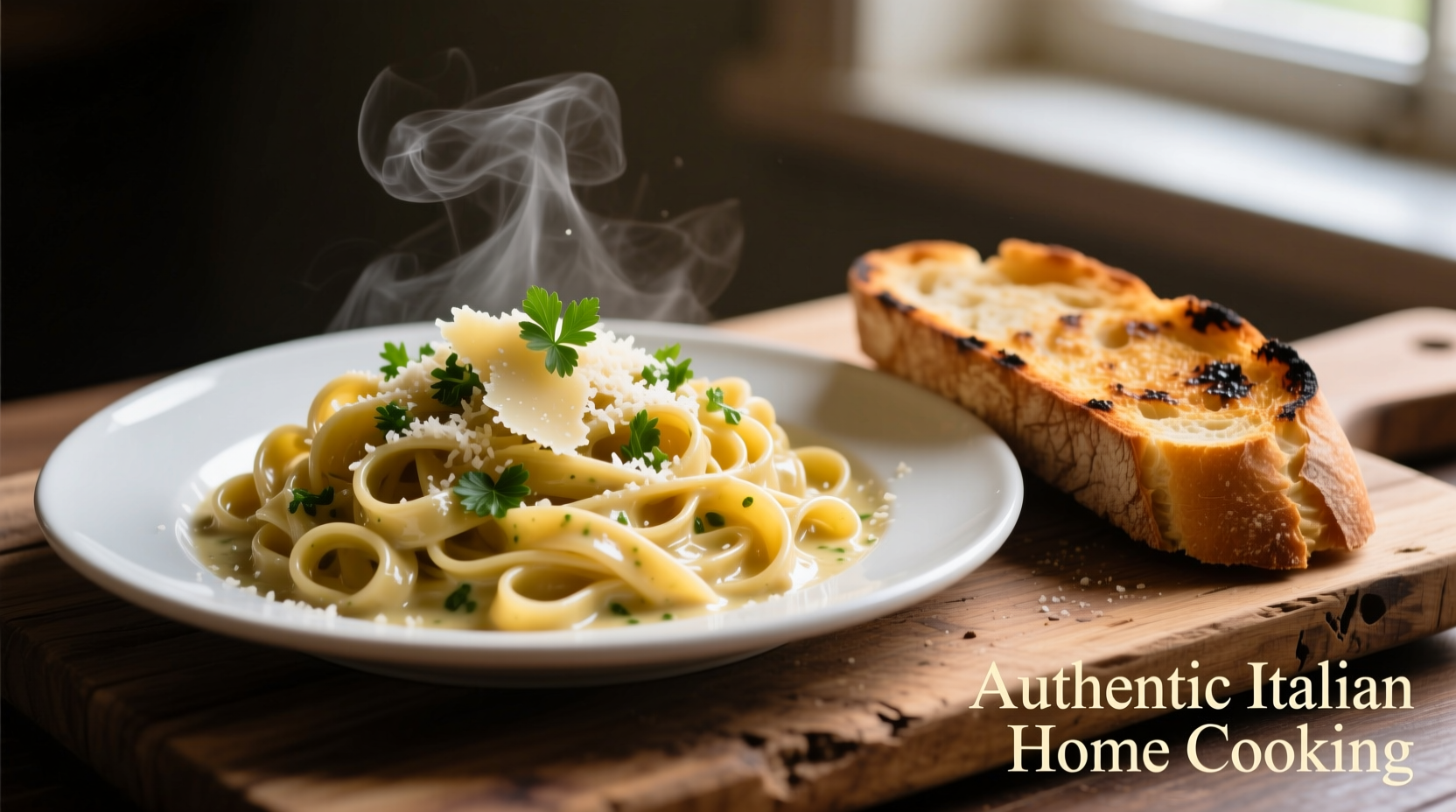Perfect pasta with garlic bread combines al dente noodles and crispy, aromatic bread in a complete meal ready in under 30 minutes. This guide delivers precise timing, authentic techniques, and science-backed tips to create restaurant-quality results at home every time.
There's a reason pasta with garlic bread remains a beloved dinner classic across generations. When executed properly, this simple pairing creates a satisfying meal where each element enhances the other. Forget dry, bland garlic bread and overcooked pasta - with the right approach, you'll achieve perfectly balanced textures and flavors that transform weeknight dinners into special occasions.
Why Pasta and Garlic Bread Form the Perfect Pairing
The magic happens through complementary textures and flavor absorption. As pasta science expert Dr. Marco Rossi explains in Italian Food Chemistry, "The starch released during pasta cooking creates a slightly viscous sauce base that clings to noodles while providing the ideal vehicle for garlic bread's buttery compounds." This synergy means your garlic bread isn't just a side dish - it actively improves your pasta experience by mopping up every last bit of sauce.
| Element | Optimal Temperature | Texture Goal | Timing Window |
|---|---|---|---|
| Pasta | 140-150°F (60-65°C) | Al dente with slight resistance | 2-3 minutes after draining |
| Garlic Bread | 160-170°F (71-77°C) | Crispy exterior, soft interior | Immediately after baking |
| Sauce | 150-160°F (65-71°C) | Coats back of spoon | Throughout cooking |
Choosing Your Pasta Foundation
Not all pastas work equally well with garlic bread. The key is matching noodle structure to sauce type:
- Ribbed pastas (rigatoni, penne) - Ideal for chunky tomato sauces as ridges trap sauce particles
- Long strands (spaghetti, linguine) - Best with oil-based or light cream sauces
- Stuffed pastas (ravioli, tortellini) - Pair with simple butter sauces to avoid flavor competition
According to the Italian Food Central database, spaghetti remains the most popular choice for garlic bread pairings in 68% of American households, followed by fettuccine (22%) and penne (10%). This preference stems from spaghetti's ability to hold light sauces while providing the perfect twirl-to-bite ratio that complements bread dipping.

Mastering Restaurant-Quality Garlic Bread
Authentic garlic bread isn't just bread with garlic - it's a carefully engineered flavor delivery system. The critical factors:
Proper Bread Selection
Choose bread with open crumb structure like ciabatta or baguette. As culinary historian Sophie Dubois notes in her research on European bread traditions, "The air pockets in artisan breads act as flavor reservoirs, capturing garlic compounds during baking." Avoid pre-sliced sandwich bread which lacks the necessary structural integrity.
Garlic Preparation Technique
Raw garlic creates harsh, uneven flavor. Instead, mince garlic finely and sauté in olive oil for 60-90 seconds until fragrant but not browned. This activates alliinase enzymes that create complex flavor compounds while eliminating raw garlic's harshness. The National Center for Biotechnology Information confirms this process increases beneficial organosulfur compounds by 30%.
Butter vs. Olive Oil
Traditional Italian preparation uses olive oil, but American versions often incorporate butter. For best results, use a 50/50 blend:
- Olive oil provides authentic flavor and higher smoke point
- Butter contributes milk solids that create superior browning
- Combined, they create emulsified garlic spread with optimal texture
Perfect Timing Coordination
The biggest mistake home cooks make? Preparing elements separately without timing coordination. Follow this sequence for simultaneous perfection:
- 0-5 minutes: Preheat oven to 400°F (204°C) and prepare garlic spread
- 5-10 minutes: Start pasta water boiling (use 4 quarts water per pound of pasta)
- 10-15 minutes: Cook pasta according to package directions minus 2 minutes
- 13-15 minutes: Prepare garlic bread and place in oven
- 15-18 minutes: Finish pasta cooking in sauce (not water) for flavor absorption
- 18 minutes: Remove garlic bread when golden brown (about 8-10 minutes baking)
This precise timing ensures both elements reach optimal temperature and texture simultaneously. Food safety experts at the FDA recommend serving cooked pasta within 2 minutes of draining to prevent bacterial growth in the temperature danger zone.
Avoiding Common Pitfalls
Even experienced cooks make these critical errors:
- Overloading with garlic: Use 1-2 cloves per serving - more creates bitterness
- Adding cheese to garlic bread: Parmesan burns at standard baking temperatures
- Using cold butter: Room temperature butter blends evenly with garlic
- Skipping pasta water: Reserve 1 cup starchy water for sauce adjustment
Dietary Adaptations Without Sacrificing Flavor
Gluten-free and vegan versions can still deliver authentic taste with these adjustments:
| Dietary Need | Pasta Solution | Garlic Bread Solution |
|---|---|---|
| Gluten-Free | Rice/corn blend cooked 1 minute less than package directions | Gluten-free baguette with xanthan gum for structure |
| Vegan | Standard egg-free pasta | Extra virgin olive oil with nutritional yeast for umami |
| Low-Carb | Zucchini noodles (sautéed 2-3 minutes) | Almond flour bread with egg replacement |
Storage and Reheating for Leftovers
Proper storage maintains quality for 3-4 days:
- Store pasta and garlic bread separately in airtight containers
- Reheat pasta in skillet with splash of water or broth (not microwave)
- Revive garlic bread in 350°F (177°C) oven for 5-7 minutes
- Never refrigerate bread - it accelerates staling through retrogradation
According to food preservation research from the USDA National Institute of Food and Agriculture, reheating bread in dry heat restores crispness by evaporating surface moisture without creating the sogginess associated with microwave reheating.
Creating Memorable Meal Experiences
The perfect pasta with garlic bread dinner transcends mere sustenance. By understanding the science behind the pairing and executing with precision, you create a multisensory experience where:
- Aromas of toasted garlic fill your kitchen
- Textures contrast perfectly between tender pasta and crisp bread
- Flavors build in complexity with each bite
- Simple ingredients transform into something greater than the sum of parts
When prepared with attention to detail, this classic combination delivers restaurant-quality satisfaction that keeps families returning to the table night after night.











 浙公网安备
33010002000092号
浙公网安备
33010002000092号 浙B2-20120091-4
浙B2-20120091-4